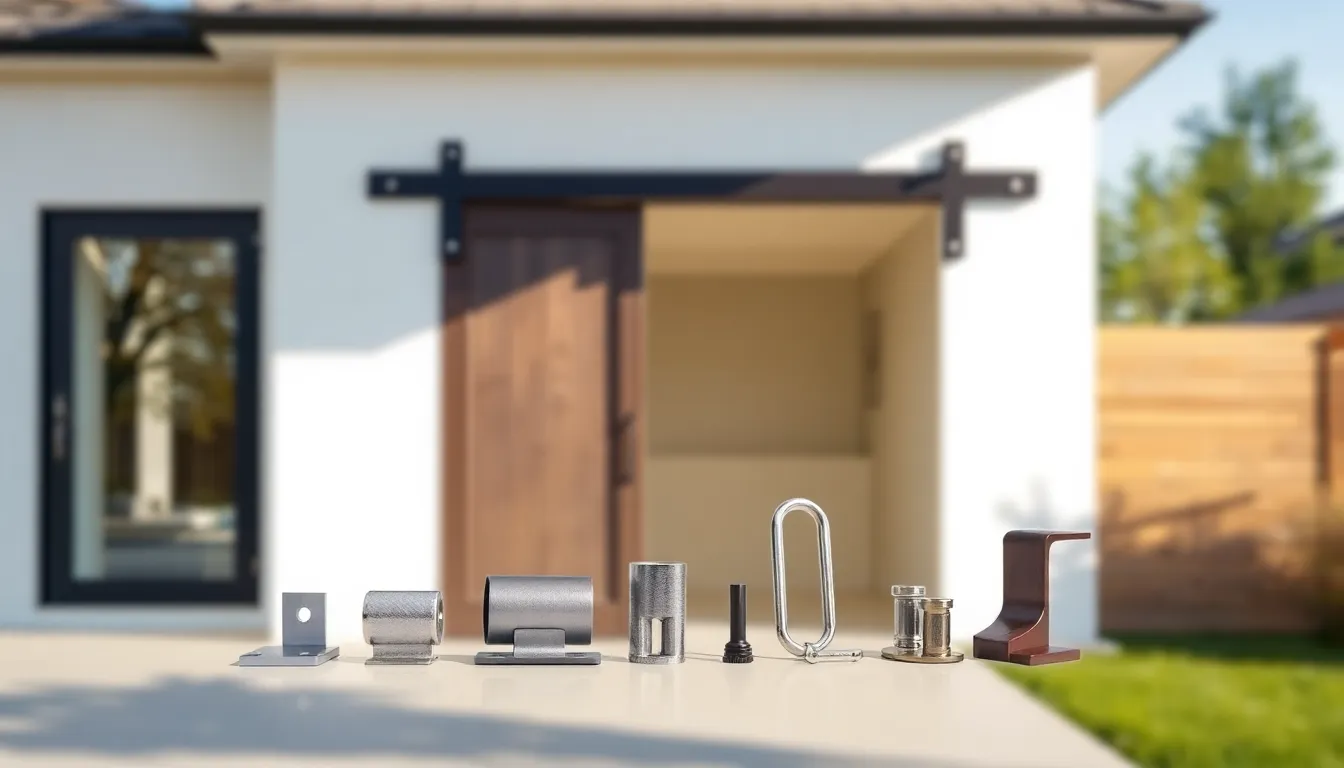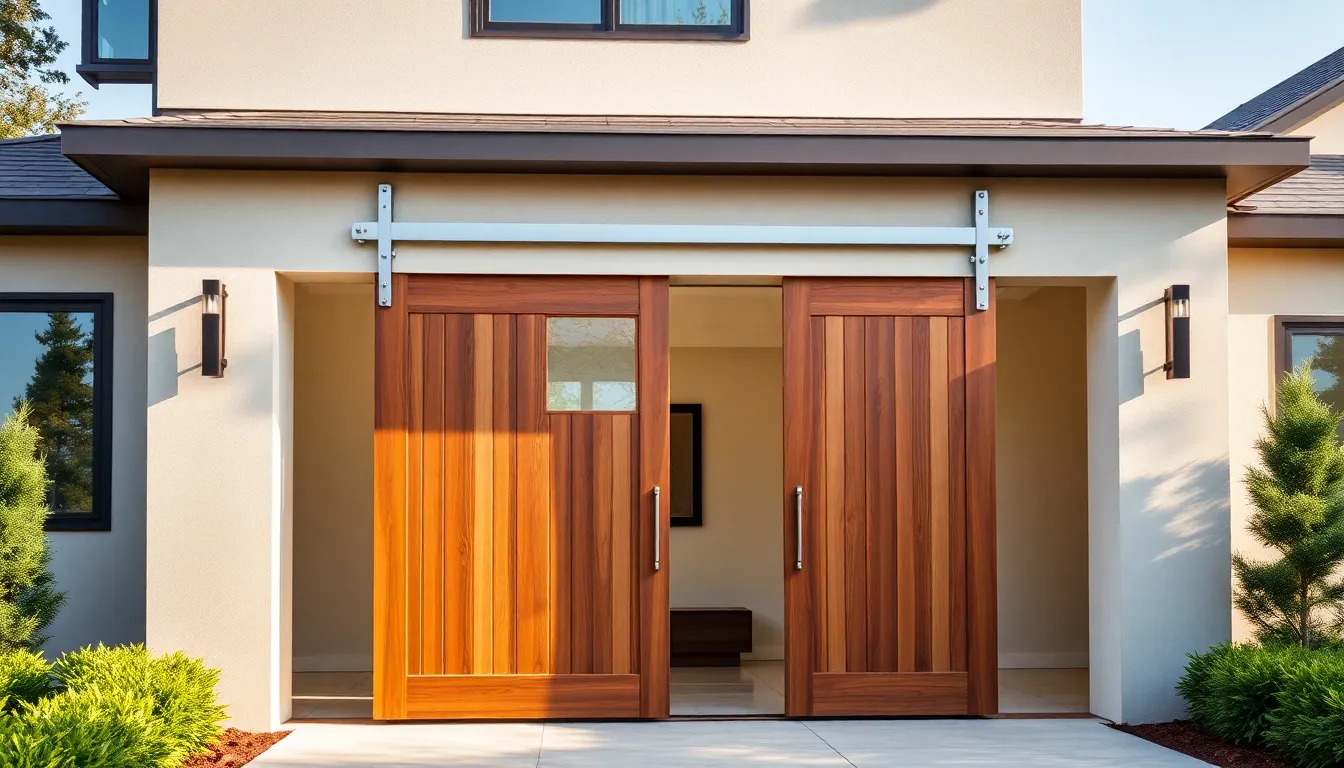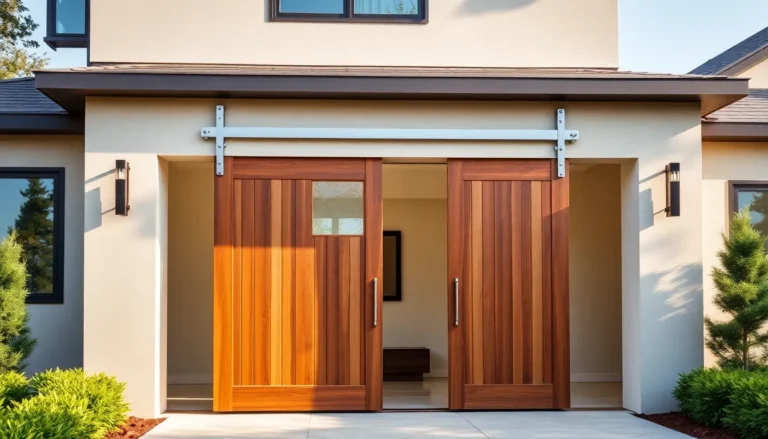Picture this: you’re standing in front of your home, admiring a charming set of exterior sliding barn doors that seem to whisper, “Look at me.” They provide not only a unique aesthetic but also perform like a dream. But, folks, are you aware of the unsung hero behind that stunning façade? Yes, it’s the hardware. Whether you’re a DIY enthusiast or a homeowner looking to elevate your space, this guide on exterior sliding barn door hardware will take you through everything you need to know, all while keeping a professional yet light-hearted tone. Buckle up.
Table of Contents
ToggleUnderstanding Sliding Barn Door Hardware

Sliding barn door hardware serves as the backbone of any good barn door, whether it’s for a shed, a patio, or a cozy nook in your home. This hardware typically includes a track, rollers, and mounting brackets, ensuring your door glides smoothly along the track. Without it, you might as well be trying to slide a brick across a table, frustrating, right?
There are various types of hardware kits available, each designed to match different door weights, sizes, and styles. Made from durable materials like steel, aluminum, or even decorative finishes, choosing the right hardware not only facilitates smooth operation but also enhances the overall aesthetic of the setting. It’s not just about functionality: it’s about expression too.
Types of Hardware for Exterior Barn Doors
When diving into the world of exterior barn door hardware, options abound, much like toppings on a pizza.
- Standard Barn Door Hardware: This is the classic set-up with a rail and rollers, often seen in rustic designs. Ideal for both contemporary and traditional spaces.
- Flat Track Hardware: An increasingly popular choice, this hardware features a flat track that sits flush against your wall, making it visually appealing and efficient.
- Bypass Hardware: Perfect for tight spaces, bypass hardware allows two doors to slide past one another, creating a double-wide entry. Talk about maximizing space.
- Bi-Fold Hardware: This operates by folding the doors inwards, a fabulous choice for closets or smaller openings, allowing for full access, no more squeezing through.
- Rustic vs. Modern Styles: The market offers a plethora of styles, from elegantly rustic to sleek modern finishes. The choice largely depends on your overall aesthetic.
Installation Process for Exterior Sliding Barn Doors
Now that you’ve found the perfect hardware, the installation process awaits. While it’s certainly possible to tackle this as a DIY project, enlisting the help of a skilled installer can save you time and headaches.
- Measure Space: Start by measuring the door opening and ensure the hardware kit accommodates your door size. It’s much easier to adjust beforehand than to fix after installation.
- Select Mounting Height: Mark where the track will be installed. A good rule of thumb is to mount the track about 6 inches above the door frame.
- Install the Track: Secure the track to the wall using the provided brackets. Ensure it is level: nobody wants a door that rolls downhill.
- Attach Rollers: Following this, attach the rollers to the door itself. They are the wheels of your sliding masterpiece.
- Hang the Door: Carefully lift the door and slide it onto the track, ensuring the rollers fit securely into the track grooves.
- Final Adjustments: Check for smooth operation. Make adjustments as necessary, ensuring it glides with minimal effort.
Maintenance Tips for Sliding Barn Door Hardware
A successful barn door installation does not end after hanging. Regular maintenance keeps your hardware operational and prolongs its lifespan:
- Regular Cleaning: Dust and debris can gather in the tracking system. A quick wipe-down with a damp cloth every month will do wonders.
- Lubrication: Every few months, apply a lubricating spray to the rollers to keep sliding smooth. Just don’t overdo it: too much can attract more dirt.
- Check for Loose Screws: Periodically inspect for loose screws or bolts and tighten them as needed. A loose bolt can lead to misalignment, nobody wants that.
- Inspect Rollers: Examine rollers for wear and tear. Replace them if they show signs of significant damage.
Benefits of Choosing Exterior Sliding Barn Doors
Choosing exterior sliding barn doors brings a host of benefits:
- Space Efficiency: They save space by sliding along the wall, making them ideal for smaller homes or patios.
- Aesthetic Appeal: With endless design possibilities, they breathe new life into both classic and modern architecture.
- Natural Light: If opted with glass panels, they can invite natural light into your spaces, creating a bright and airy atmosphere.
- Increased Accessibility: Wider openings foster greater accessibility, perfect for gatherings or daily use.
Design Considerations for Exterior Barn Doors
While selecting your exterior sliding barn door, there are important design aspects to consider:
- Material Choice: Will it be wood, metal, or a combination? Wood provides warmth, while metal offers a contemporary feel.
- Color Coordination: Matching your door color with the house exterior enhances curb appeal.
- Track Visibility: Decide if you want your hardware visible or concealed. A rustic exposed track adds charm, whereas a hidden track gives a sleek look.
- Size Matters: Choose door dimensions that suit your space, too large, and it becomes cumbersome: too small, and it lacks impact.





